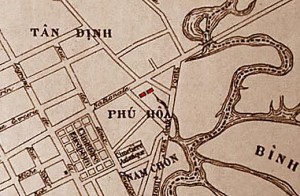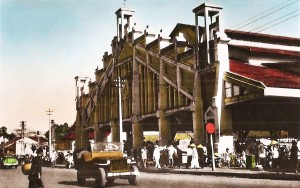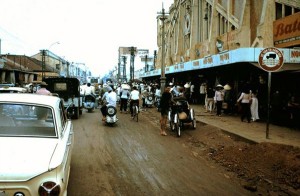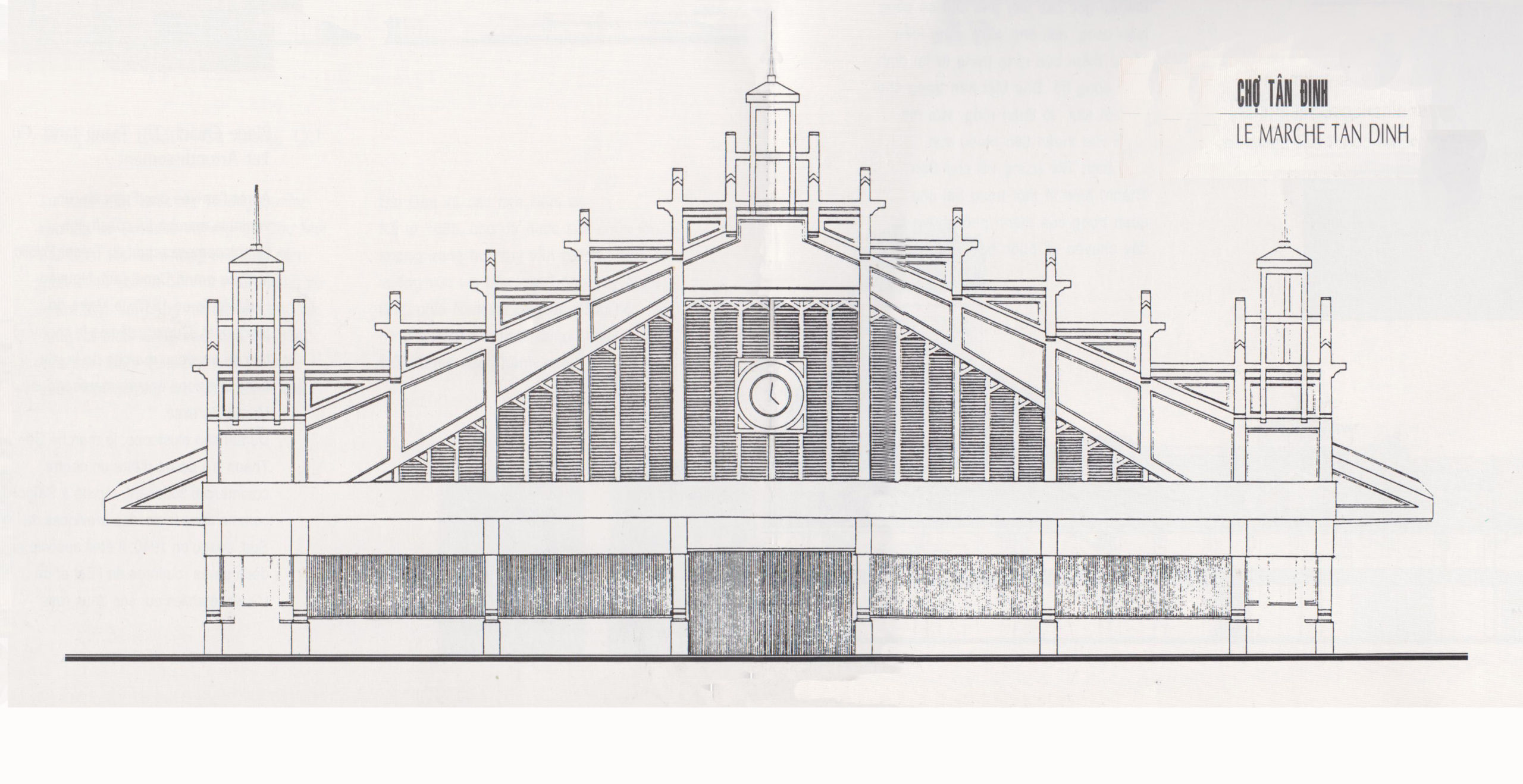
Tân Định Market today
This article was published previously in Saigoneer http://saigoneer.com
Originally known as the marché de Phu-Hoa, Tân Định Market at 1 Nguyễn Hữu Cầu in District 1 is one of the city’s most historic markets, but it was the opening of the stylish French market building of 1927 which brought it to worldwide attention.

This 1903 Saigon map shows the location of the market in Phú Hòa village and just across the road the adjacent village of Tân Định
Colonial records from the 1870s and 1880s indicate that the Phú Hòa Market (marché de Phu-Hoa, chợ Phú Hòa) was one of the most important markets in the north of Saigon, although no images of the market building during that period have survived.
By the turn of the century, perhaps because of its proximity to the Tân Định Church, a prominent landmark located just across the road in the adjacent Tân Định village, it was increasingly referred to in government records by the name Marché de Tan-Dinh.
However, as it was situated in Phú Hòa village, references to the “Marché de Phu-Hoa (Tan-Dinh)” and even “Marché de Phu-Hoa, rues Paul Blanchy, Vassaigne, Lê-Van-Duyêt et Nguyên-Van-Duong” continue to appear in the colonial record right down to the 1930s.

Tân Định Market in the 1940s
Early in 1926, the colonial authorities voted 110,000 piastres for the reconstruction of the market building, partly in order to improve standards of hygiene, but also to generate additional revenue from the issue of licences to traders using the new premises.
Designed and constructed by the Société Indochinoise d’Études et de Constructions (SIDEC), the new building differed from other city markets in that it comprised a large open plan space without compartments, supported by reinforced concrete pillars.
According to the Annales coloniales of 3 September 1927, the new marché de Tan-Dinh was inaugurated on 26 July 1927 in the presence of the Governor of Cochinchine, the President of the Colonial Council, the Mayor of Saigon and numerous unnamed “Saigon personalities.”

Tân Định Market in the 1960s
In the years after its completion, its stylish design was deemed so noteworthy that the French authorities even commissioned a 20,000 Franc diorama of the market building for display at the Paris Colonial Exposition of 1931.
Unfortunately the original roof has not survived, but the building has retained its unusual and attractive façade right down to the present day.

Chợ Tân Định, Pairaudeau, Natasha et al (eds), Saïgon 1698-1998, Kiến trúc/Architectures, Quy hoạch/Urbanisme (Nhà xuất bản Thành phố Hồ Chí Minh, 1998)
Tim Doling is the author of the guidebook Exploring Saigon-Chợ Lớn – Vanishing heritage of Hồ Chí Minh City (Nhà Xuất Bản Thế Giới, Hà Nội, 2019)
A full index of all Tim’s blog articles since November 2013 is now available here.
Join the Facebook group pages Saigon-Chợ Lớn Then & Now to see historic photographs juxtaposed with new ones taken in the same locations, and Đài Quan sát Di sản Sài Gòn – Saigon Heritage Observatory for up-to-date information on conservation issues in Saigon and Chợ Lớn.

